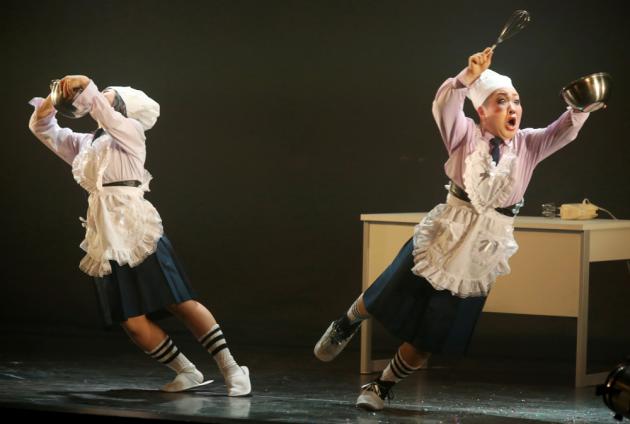Off to a loud start

The six-year collaborative project, "Dance Dance Asia" kicks off
ARRIVING AT M Theatre last Sunday evening for the final performance of “Dance Dance Asia”, I was looking very hard for someone my age or older. Salvation came in the form of the director of the Japan Foundation but I didn’t see anyone else.
Perhaps that was a good thing given the loud screams and tumultuous applause that erupted throughout the 100 or so minutes of the three-part performance. The ambience was rather like that at a pop concert and even though the young members of the audience were not die-hard fans of these Japanese dance performers at curtain time, they certainly were at the end.
Making their international premiere in Bangkok, the 11-year-old dance entertainment group Umebou picked the right work for soccer-mad Thailand with a show that focused on football. Not only did they prove they could dance very well but also that they could also tell a simple story on the stage – something which most of our young dancers haven’t learned to do yet – with the help of costume, lighting, sound designs and of course choreography. As to the latter, I wished the choreographer had rethought the use of the ball in the dance movements as at certain moments the dancers looked like artists trying to play football, not the other way around.
Umebou’s philosophy is that “dance is feeling” and we could certainly feel their dramatised emotions. It was also clear that for them skills are skills and what matters more is what you want to do with them.
The thermometer dropped slightly when the 20-something group 90’s took the stage with a work inspired by an airliner that took them to various parts of the world. They had fun with different costumes and dance styles yet only wowed for a while. It was evident after a few stops on this flight that the performers just wanted to show their skills – and that we could watch in other media. Towards the end though, their movements showed some fusion with traditional dance, and that might be a glimpse of what’s to come in the intercultural collaboration as part of this six-year project “Dance Dance Asia”.
Capping off the evening – and the audience soon realised why they were fittingly scheduled last – was Tokyo Gegegay who imaginatively and sarcastically turned a high school classroom where students were studying into a unique dance realm. Intriguingly, this is the most recently formed of the three groups and yet the performance by all five members, highlighted by vibrant characterisation and theatrical acting, made it seem as if they had been together for decades.
Thai dance group The Zoo joined in the lunch break scene and, while drawing loud screams and cheers from their local fans, they would have done well to hire a new costume designer and remember the show was not a dance battle.
Thanks to the support of the Sikkha Foundation, Tokyo Gegegay leader Mikey arrived in town early to give dance workshops to children from Khlong Toey community. Their joyful presence on the stage proved again that dance is a universal language which can be spoken, understood and enjoyed by anyone – and so the choice of street dance as a connecting tool between Japan and Southeast Asia is right on.
With the getting-to-know-you part of “Dance Dance Asia” now done and dusted, it is time to look at ways in which Japanese and Thai dance groups can to work together fruitfully. That of course is more complicated given that this chosen medium is neither Japanese nor Thai.
Besides making young Thai dancers forget about “cover dance” for a while, this triple-bill showed how street dance can break away from the streets and contests and find a new home in the legitimate theatre.
Worrying though, was the absence from the show of artists – and audiences – of other dance genres, presumably because they had written off street dancing as not being their thing.
Hopefully, Dance Dance Asia will take the issue of audience development into their planning of the next stages.
We live in an age when lines between genres of performing arts are blurring and yet many of our young artists are trained to have a narrow outlook. I was saddened when a 20-year-old student confided she only watched classical ballet and Spanish dance because that’s what she was trained in and it was what she was teaching. Some parents have much the same attitude: “Hip hop is not for my kids: they need discipline from classical ballet classes,” one mother told me.
Little surprise then that there are so many dance teachers in this country but only very few professional dance companies.
On the Web: www.DanceDanceAsia.com
www.Facebook.com/DDABKK





